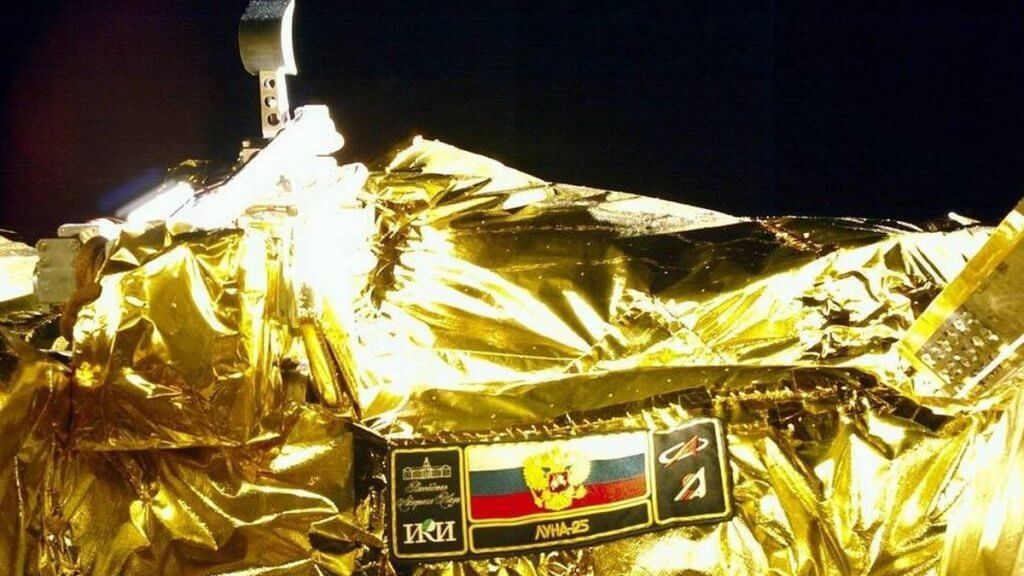Russia’s first moon lander in 47 years has crashed into the lunar surface, the country’s space agency reported Sunday (Aug. 20).
The Luna-25 lander, which Russia had hoped would land at the south pole of the moon as early as Monday (Aug. 21), crashed into the moon after an orbital maneuver went wrong yesterday, officials with Russia’s Roscomos space agency said.
“At about 14:57 Moscow time, communication with the Luna-25 spacecraft was interrupted,” Roscosmos wrote in an update on Telegram today. “The measures taken on August 19 and 20 to search for the device and get into contact with it did not produce any results.”
Related: Russia launches Luna-25 moon lander, its 1st lunar probe in 47 years
A preliminary analysis suggests that the wayward orbital maneuver sent Luna-25 into an unexpected trajectory, one in which the moon lander “ceased to exist as a result of a collision with the lunar surface,” Roscosmos wrote.
Luna-25 was hoped to be a major space milestone for Russia. The last moon probe from the country was Luna-24 in 1976, when Russia was still part of the Soviet Union. That probe landed in the moon’s Sea of Crises (Mare Crisium) and ferried a sample back to Earth, a few years after the last human moon landing by NASA in 1972. Luna-25 was targeted at the south pole of the moon, where the probe was to spend one Earth year searching for water ice.
Luna-25 launched on Aug. 10 and sent its first in-space photos back on Aug. 13, including selfies with the moon and the Earth far behind it. The mission swiftly reached lunar orbit, which Roscosmos announced on Aug. 16.
The spacecraft’s primary landing zone was a region called Boguslawsky Crater, but there were two backup landing spots also available: Southwest of Manzini Crater, and south of Pentland A Crater.
Aside from hunting water ice, Luna 25’s main science goals were to include examining the regolith and rocks around it, looking at the wispy lunar atmosphere and testing out technology for future landings on the moon.
Russian aerospace company NPO Lavochkin designed and built the lander, which had two major parts: a landing platform with a propulsion system; and landing gear, including a velocity and range meter to allow for a safe touchdown. Also on the lander was a non-pressurized instrument container that includes items such as solar panels, radiators, antennas, television cameras, a power source and scientific equipment.
The loss of Luna-25 will likely be a major blow for Russia’s plans to fly a series of moon missions and its effort to develop a permanent crewed based on the moon with China. Roscosmos planned to follow the landing mission up with lunar orbiter, called Luna-26, and then two more landing missions: Luna-27. which would send a drilling rig to the lunar surface; and Luna-28, a sample-collection mission to return samples of the moon’s polar regions to Earth.
Related: Missions to the moon: Past, present and future
Those subsequent moon missions will likely be substantially delayed due to Luna-25’s failure as Roscosmos investigates to find the root cause of the probe’s crash into the moon. The mission had already been delayed by technical issues and challenges due to sanctions over Russia’s ongoing war on Ukraine that led the European Space Agency – which was to provide a precision camera to help Luna-25 land – to pull out of cooperative space projects with the country.
Roscosmos officials said Sunday that they have already formed a team to investigate the crash of Luna-25.
“A specially formed interdepartmental commission will deal with the issues of clarifying the reasons for the loss of the Moon,” Roscosmos wrote in the Telegram update.
Luna-25 is not alone in reaching for the moon’s south pole. India’s Chandrayaan 3 lander is also on track to touch down in that area very soon, as early as Aug. 23 or Aug. 24. NASA also has the south pole as a keystone part of its Artemis program to put people and landers on the moon in the coming decade.
For people, the agency plans to land the crewed Artemis 3 mission there in late 2025 or 2026, providing the earlier Artemis 2 loops around the moon as planned with its crew in late 2024 and that the spacesuits and lander are ready. NASA also has a series of commercial landers it funded, some of which may arrive as soon as late 2023.
Editor’s note: This story was updated at 9:25 a.m. EDT to include the statement from Roscomos that Luna-25 had crashed into the moon. Space.com Editor-in-Chief Tariq Malik contributed to this report.

